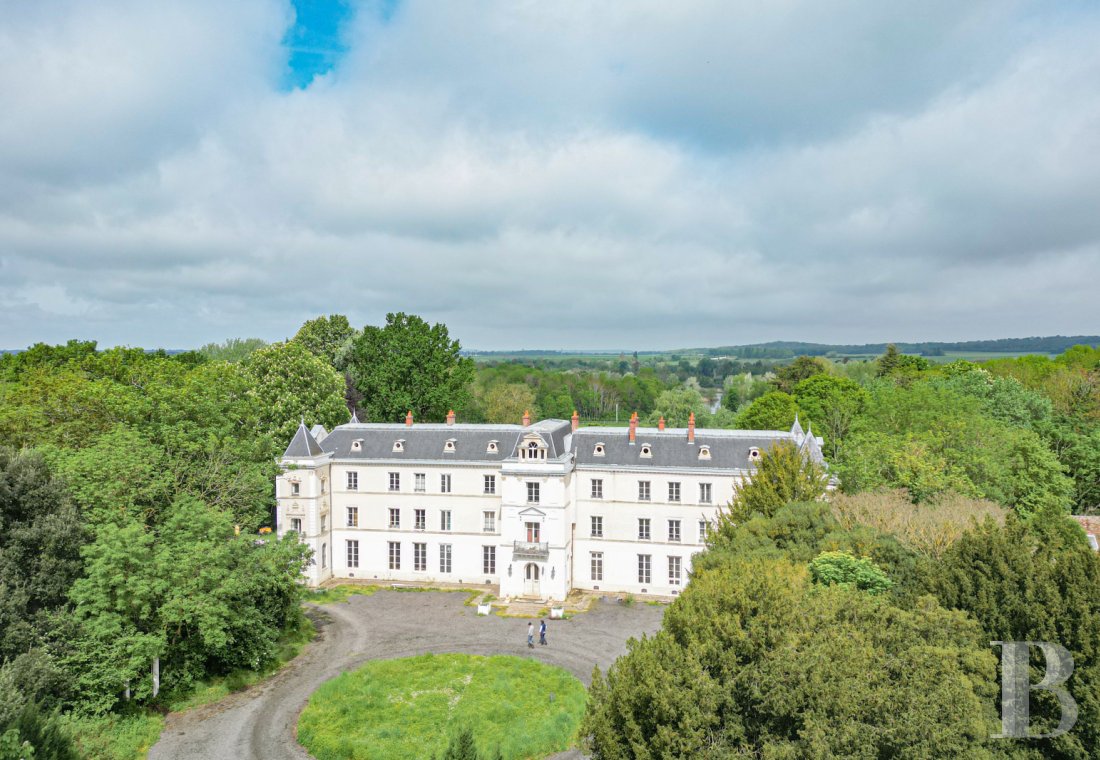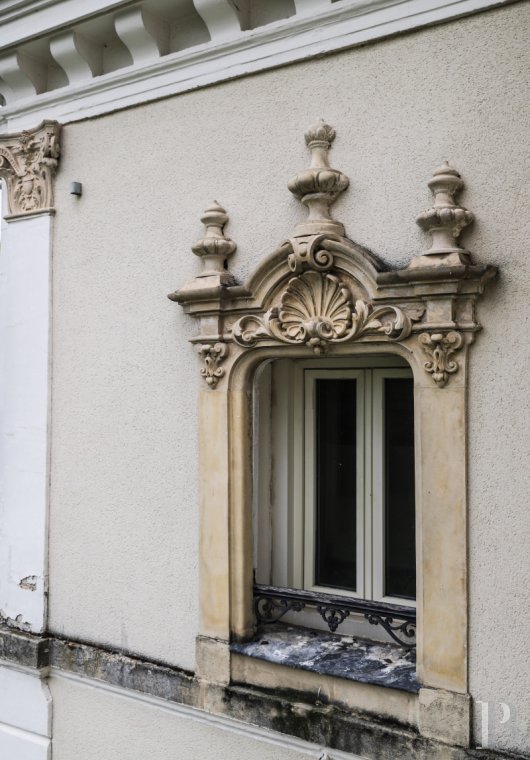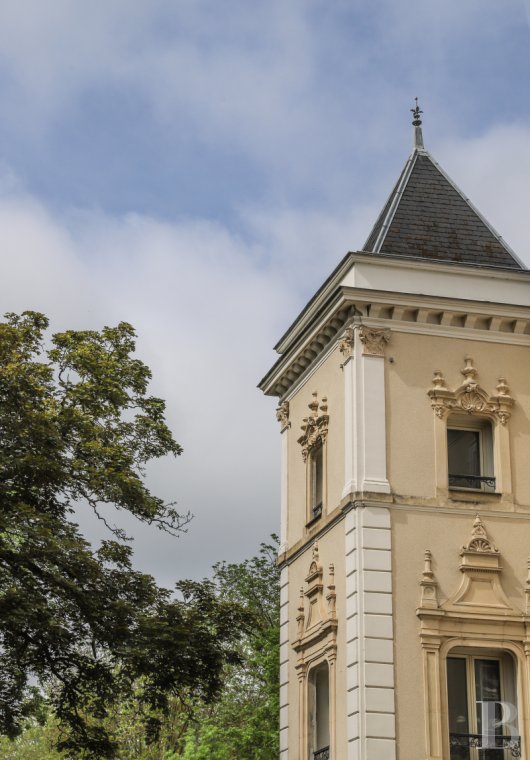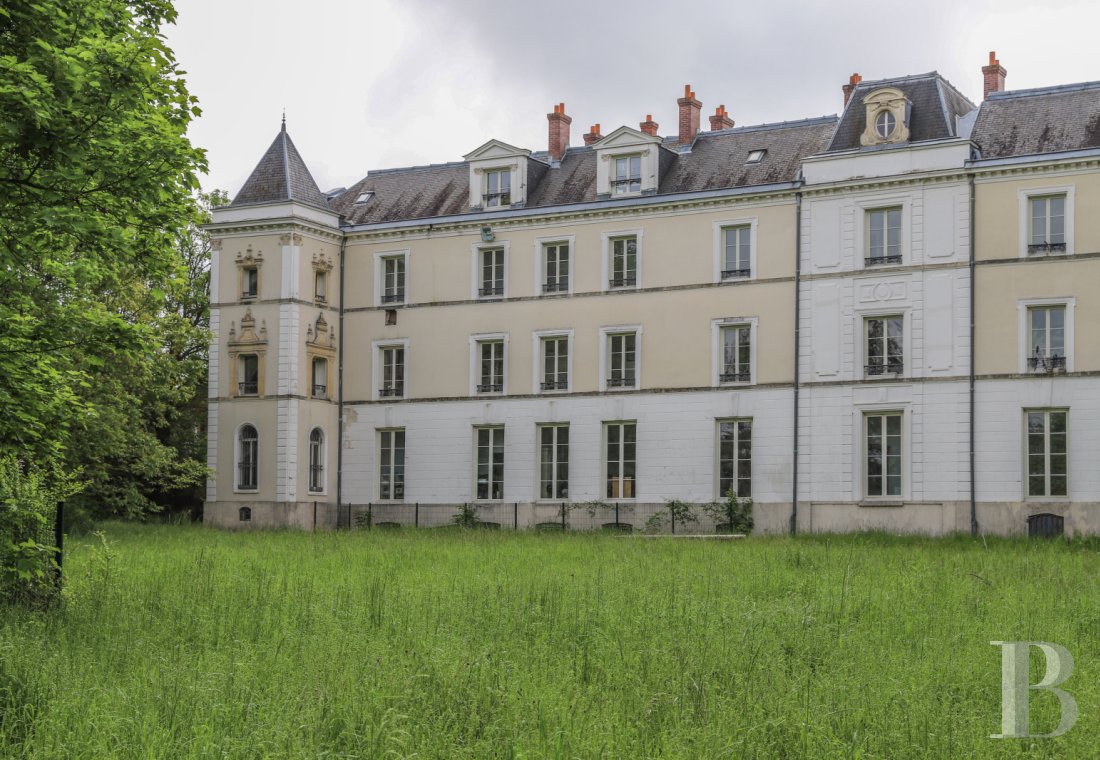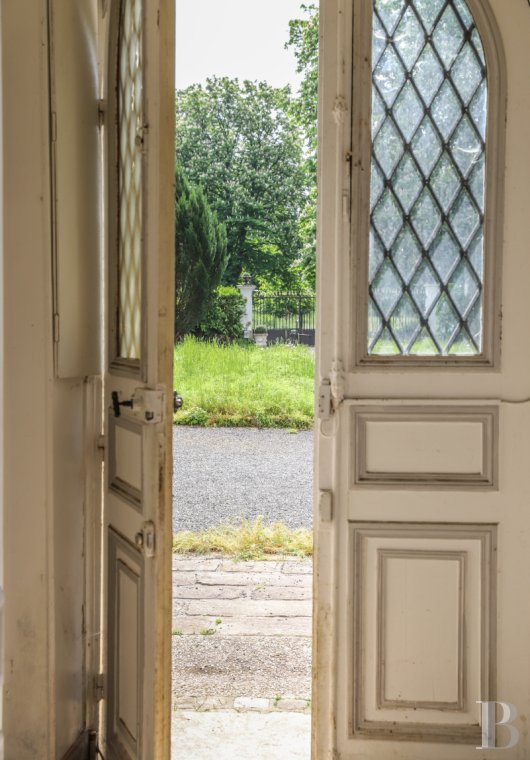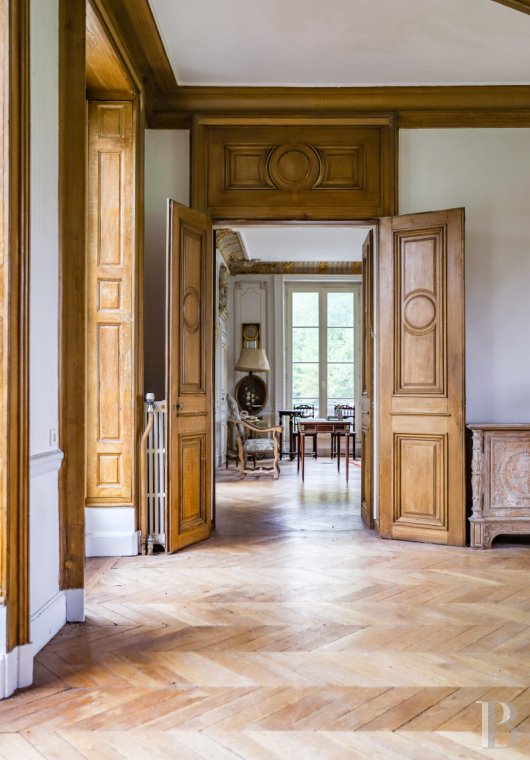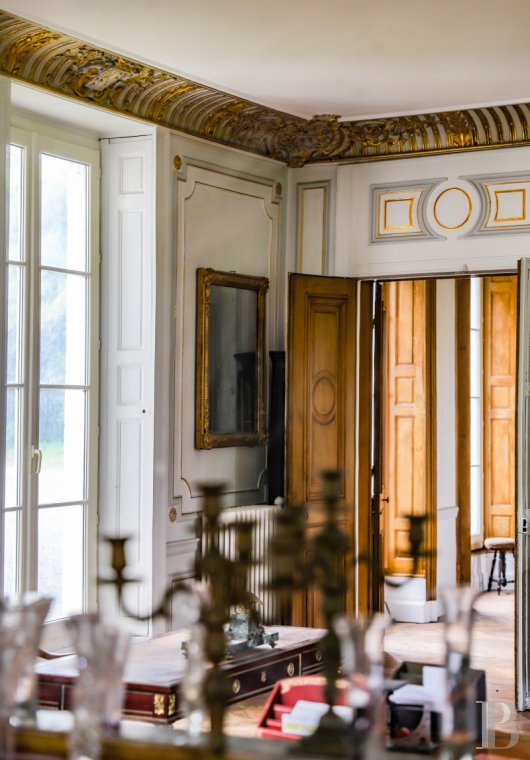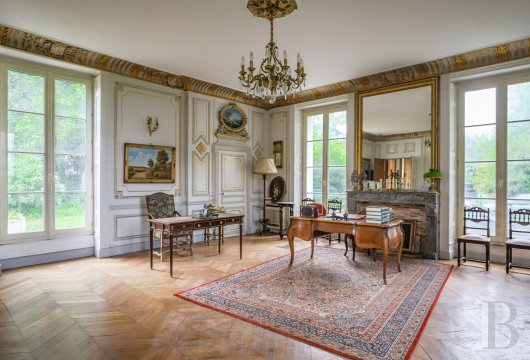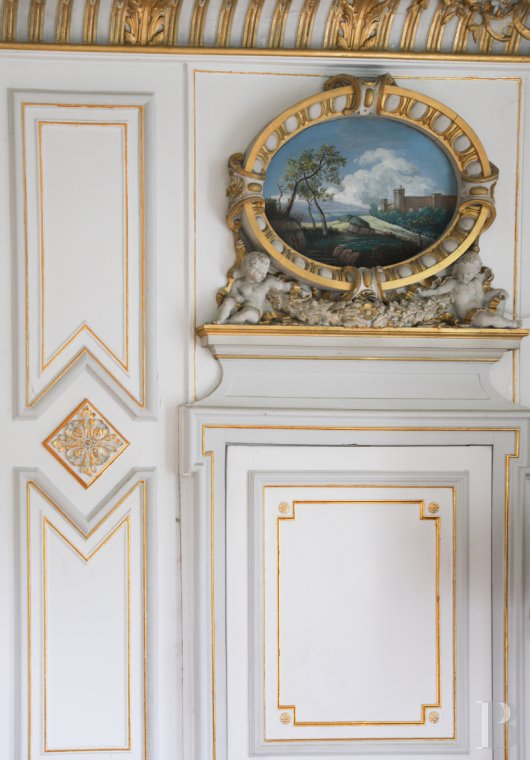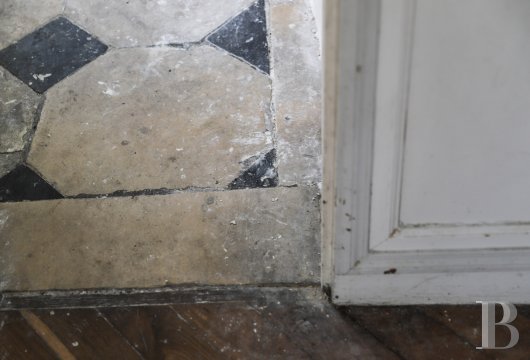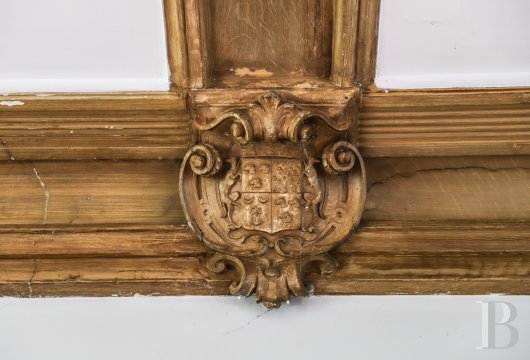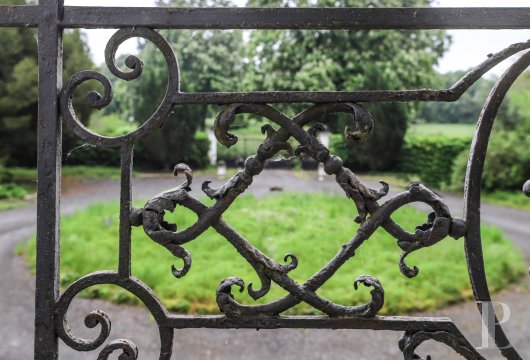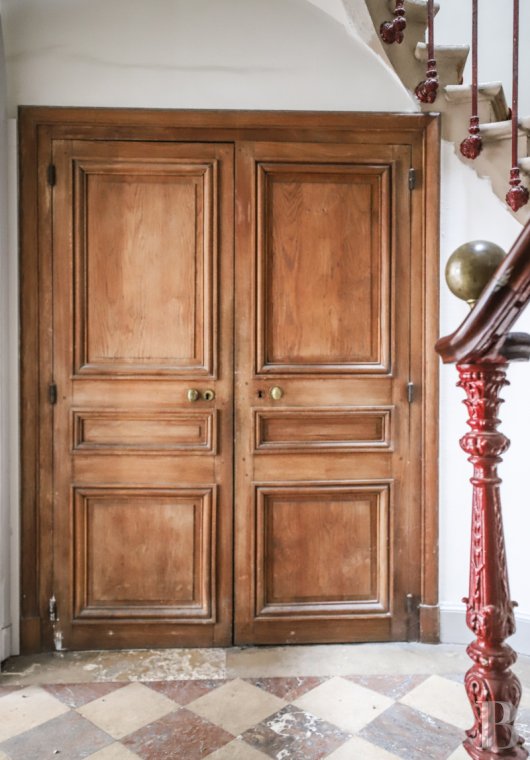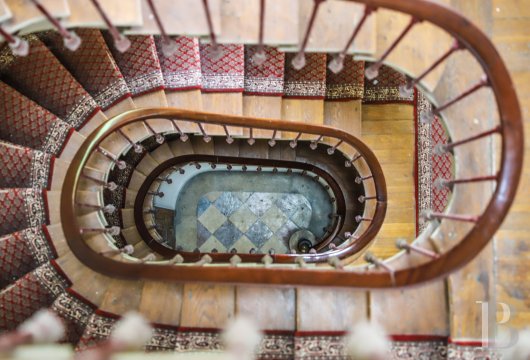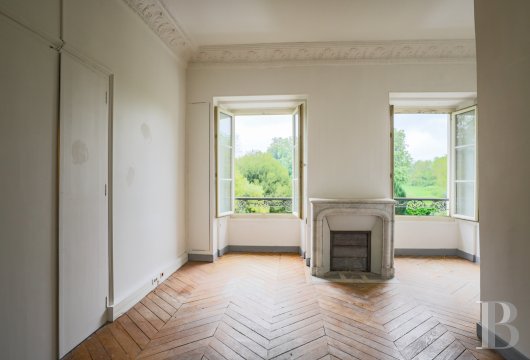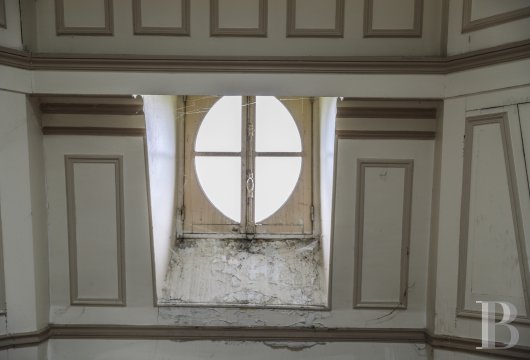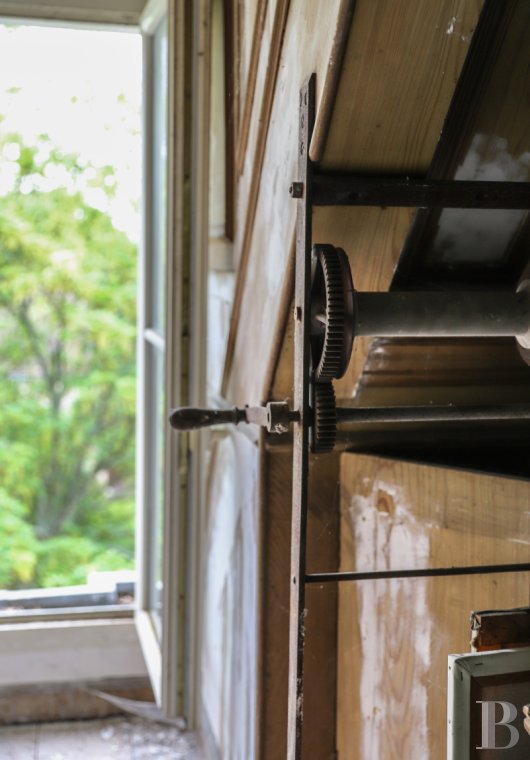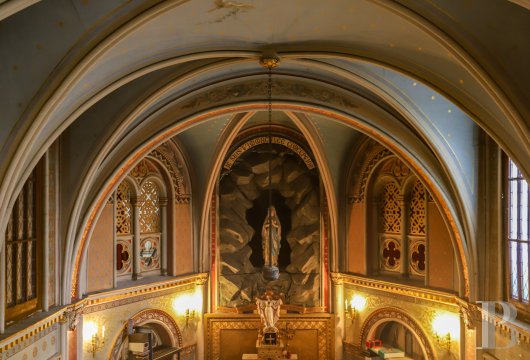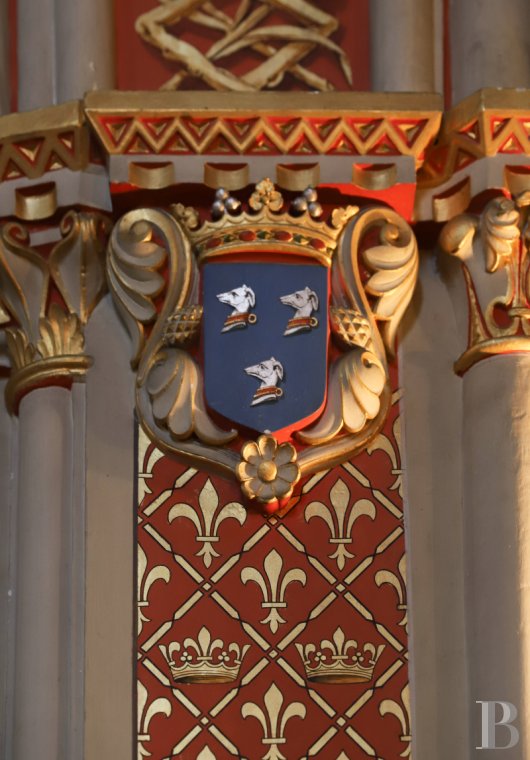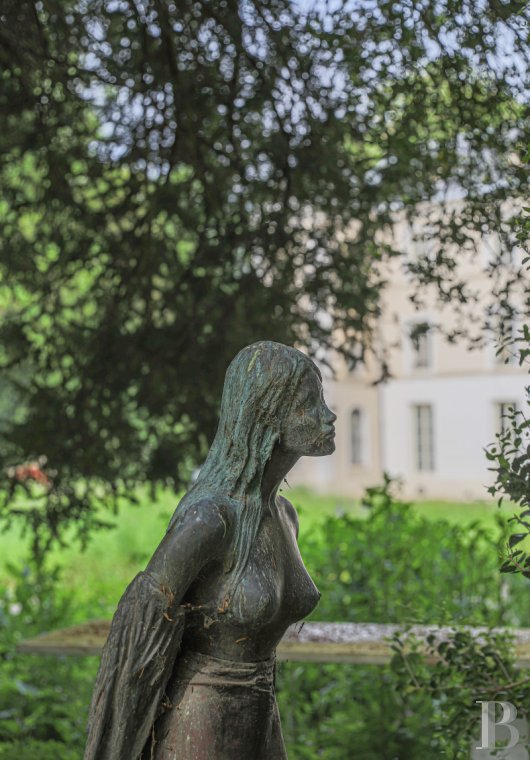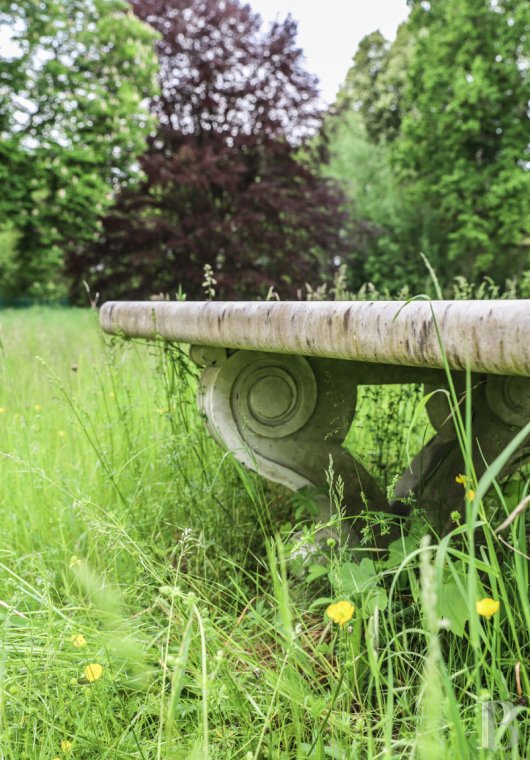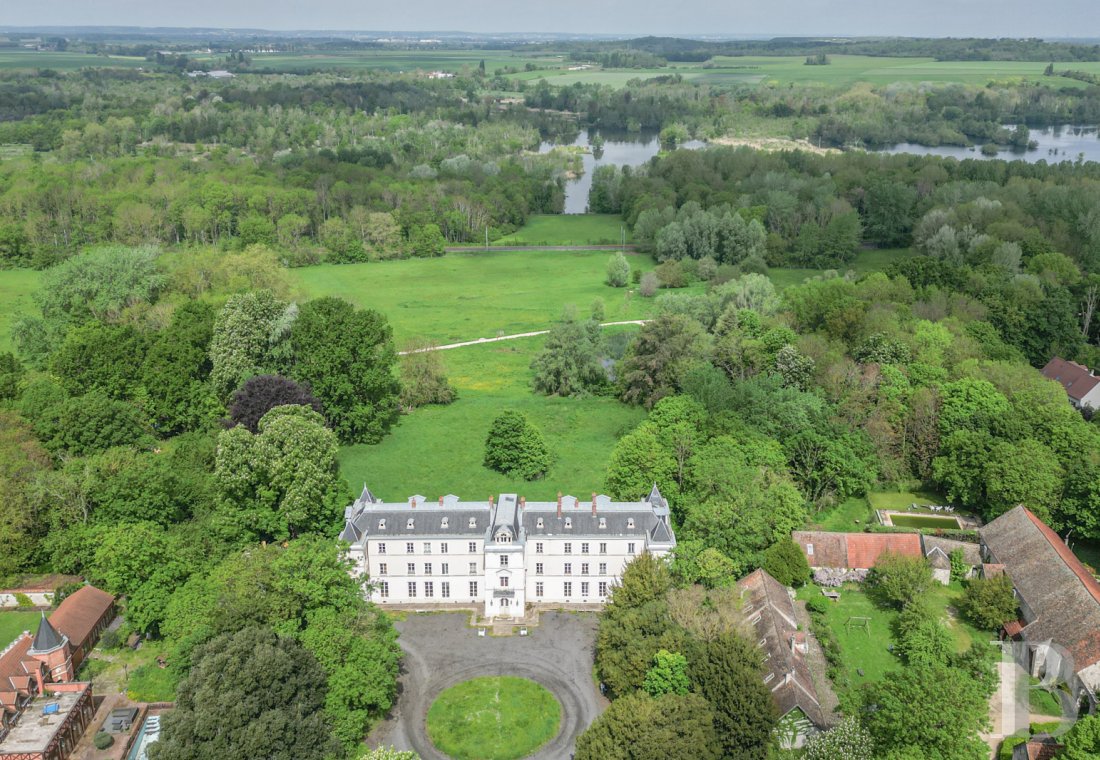Location
In the south of the Ile-de-France region, the mansion is situated in the Essonne valley in a town with all essential everyday shops and amenities. The immediate surroundings of the mansion draw on the rich landscape of the French Gâtinais regional natural park, where forests cover more than a third of the territory and alternate with farmland and sandstone or sandy outcrops. The estate is 35 km or 40 minutes south-east of Paris via the A6 motorway, 6 minutes from an RER suburban train station and 45 minutes from Orly airport.
Description
This four-storey mansion spans approximately 1,200 m². Its slate roof, which is in excellent condition, is dotted with bullseye windows. The edifice extends out on either side of a central south-east facing front section. This houses the main entrance, topped by a wrought iron balcony whose motifs are reminiscent of the Sun King's monogram. The balcony can be reached via French windows framed by a sculpted pediment. The upper part of the front section rests on four columns topped with capitals. On each side of the entrance, two carved stone sphinxes stand guard over the estate. Each wing has a row of five windows per level. On the ground floor, thanks to the dual aspect rooms, they connect the front and rear of the grounds.
At the four corners of the mansion, four square towers emphasise the symmetry of the design. Each tower features windows richly decorated with carved shells and floral motifs in the Renaissance style. The façades of the towers are framed by slender columns crowned with finely crafted capitals. The north-west façade, facing the grounds, echoes the composition of the main façade. Its central avant-corps stands beneath a bullseye window framed by two imposing gable dormers. All of the façades, as well as the slate roof, have been carefully restored in keeping with their original architectural style.
The Mansion
The ground floor
Past the main entrance door, a second interior door provides access to the entrance hall and the grand staircase at the back. To the left, two carved wooden doors reveal a striking view of the various sitting and drawing rooms following on from one another. The first is adorned with Trianon grey painted woodwork, lending a typically 18th century style to the room. Two tall windows on either side provide plenty of light. A large double door provides access to the second drawing room, known as the "Salon des Blasons" (Coat of Arms Room), on account of the four coats of arms sculpted on the ceiling, belonging to the former families who had been masters of the premises. A double door topped by a carved wooden pediment leads to the large drawing room, known as the "Salon Doré" (Golden Drawing Room). The walls are panelled with grey and gold painted woodwork topped by a carved frieze featuring various coats of arms framed by carved greyhounds and adorned with crowns. Two doors leading to the ground floor of the corner towers are crowned by painted oval trumeaux depicting landscapes in the manner of late 17th century Italian paintings, framed by garlands of sculpted flowers held by putti. The four tall windows illuminate the room with natural light that catches the gilding. The dual-exposure sitting rooms follow the path of the sun, and the tall windows offer a view of the grounds and the Essonne River in the distance. Back in the entrance hall, a double door leads to a gallery serving two other drawing rooms and a third, larger sitting room with a Louis XV style fireplace of white stone topped by an overmantel mirror. From here, a small corridor leads to a room in the corner tower of the main facade, to another room used as an archive, and to a staircase in the north-east tower. This connects to the upper floors and to the cellar.
The first floor
Accessed from the main staircase, it is also served by two staircases located in the rear towers. A gallery leads to seven bedrooms, all facing south-east. They have been renovated by the current owners while retaining certain old features such as marble fireplaces, Versailles parquet flooring and mouldings. A double door at the north-east end of the gallery provides access to the mansion's chapel. This neo-Roman style chapel has two levels. It has retained its original decor. A neo-Gothic tabernacle sits imposingly on top of the altar and is guarded by a Virgin Mary emerging from a carved wooden grotto. The walls are adorned with paintings of curtaining and flowers, as well as the coats of arms of the former ruling families. The groin-vaulted ceiling boasts a painted starlit sky with flying doves. Facing the altar, the neo-Gothic carved wooden confessional is topped by a balcony that can be accessed from the second floor. All the original stained glass windows have been miraculously preserved from the ravages of time. On either side of the altar, two large doors with stained glass panes lead to the sacristy. A small corridor provides access to the gallery and to the staircase in the north-east tower.
The second floor
Reached from the main staircase and the spiral staircases in the two rear towers, this level comprises a gallery leading to the eight bedrooms with herringbone parquet flooring. Two of these have en-suite bathrooms. The current owners have started to install a third bathroom. One of the bedrooms has a double door opening onto a balcony with a bird's eye view into the chapel. At the end of the gallery, a small corridor leads to the back of the Virgin Mary statue in the chapel. The triforium with its neo-Gothic ceiling above the altar offers a discreetly hidden view of the chapel.
The third floor
This level is accessed from the main staircase as well as from the spiral staircase in the north-east tower. The main landing, topped by a vaulted ceiling with a skylight, leads to 5 bedrooms in the west wing. A small doorway leads to the east wing, which contains a number of small rooms, as well as a larger room which was originally used as a linen room. A late 19th century pulley block has been preserved. The floors are of terracotta tiles and straight strip parquet. Part of the west wing has been restored by the owners.
The basement
Accessed from the staircase in the north-east tower, they stretch over the entire surface of the chateau. They comprise a large room used as kitchen which needs to be equipped, as well as various vaulted rooms including a utility room.
The stables
They stand to the southwest of the mansion, near to the swimming pool and are characterised by their neo-Gothic architecture. Two octagonal towers topped by pepper-pot roofs frame the central section that combines brick and half-timbered façades. They span approximately 200 m² and have been fully restored. The ground floor, with wood stripped flooring throughout, is made up of a vast living room boasting an imposing wooden fireplace, crafted by a master builder, standing against one of the walls. Next to it, an open-plan kitchen stands opposite a dining room. On one side, a door leads to a suite with a bedroom, walk-in wardrobe and a bathroom with a whirlpool bath. A second staircase climbs to the upper floors.
On the other side, there is a first bedroom, with an en suite shower room, overlooking the garden. This is followed by a second bedroom which was most probably the former saddlery, in light of the woodwork features adorning the walls. The first floor can be reached via the main staircase and is made up of a landing, which leads, through two French windows, onto the vast patio overlooking the swimming pool. On either side, two vast bedrooms adjoin a bathroom with a lavatory as well as a walk-in wardrobe.
Very close by, a second adjacent part spanning approximately 80 m² is currently undergoing renovation and could provide further living space to be converted according to needs.
The estate keeper’s house
This two-storey building topped with a roof made of interlocking tiles is situated to the south of the mansion, near to the stables and the second entrance gate. It is characterised by brick window and door frames typical of 19th-century outbuilding architecture. The estate keeper’s house is currently divided into three separate apartments. The first, on the ground floor, is made up of a living room, an open-plan kitchen and a bedroom. The second is a split-level apartment and includes a lounge and a kitchen, from which the staircase climbs to the upper level, which houses two bedrooms adjacent to a bathroom. The third apartment is located on the first floor and can be reached by a flight of outside steps. It is made up of an entrance, a kitchen, a bathroom and a vast bedroom.
The grounds
They surround the mansion and span approximately 3 hectares. To the front, they are formed by a circular lawn that forms part of the perspective between the entrance gate and the mansion. The first drive, bordered by lilac bushes, trees and boxwood leads to an alcove made of carved stone and adorned with stars. In the centre, a copper sculpture depicts the goddess Diane, evoking late 18th-century inspirations from the Antiquity. A second, more discrete drive could be created in order to reach the mansion away from prying eyes. A second gate near to the estate keeper’s house leads to the outbuildings. The rear of the grounds resembles a landscaped garden, planted with hundred-year-old trees here and there. The landscape is organised in such a way to draw the gaze toward the distant perspective. A large, 18th-century style, white marble table in the middle of wildflowers seems to be the ideal point for observing it all. A little further away, an old cave that is still visible houses a discrete spring. To the north, a washhouse covered in ivy can be found among undergrowth planted with horse chestnut, lilac and oak trees. Another plot spanning approximately 1.5 hectares of meadows and woods is situated opposite the mansion’s gate. It boasts hundred-year-old trees including majestic chestnuts.
Our opinion
This mansion embodies the quintessence of mid-19th-century architecture, a time during which rediscovery of past styles was daringly combined with the demands of modern comfort. Rather than simple gratuitous eclecticism, every element and each feature has found its particular place, to form a coherent and inspired canvas. The chapel, which is the veritable gem of the mansion’s interior, forms its centrepiece through its opulent décor and the spirituality it exudes.
With 1,200 m² of living space, many lounges and more than twenty bedrooms, this residence opens up plenty of possibilities, as a family home, guest accommodation or an exceptional reception venue. The restoration in progress is respectful of the property’s spirit and awaits completion.
The estate is further enhanced by the converted stables and the estate keeper’s house, which provide extra potential. Lastly, the grounds provide unity to the buildings through a series of perspectives reminiscent of the compositions of painters from this era.
4 200 000 €
Fees at the Vendor’s expense
Reference 936716
| Land registry surface area | 4 ha 66 a 31 ca |
| Main building floor area | 1200 m² |
| Number of bedrooms | +20 |
| Outbuildings floor area | 500 m² |
French Energy Performance Diagnosis
NB: The above information is not only the result of our visit to the property; it is also based on information provided by the current owner. It is by no means comprehensive or strictly accurate especially where surface areas and construction dates are concerned. We cannot, therefore, be held liable for any misrepresentation.


